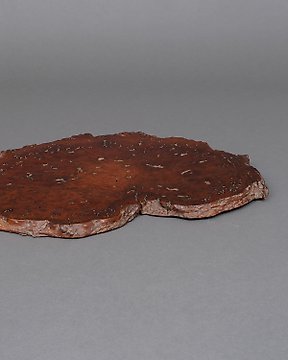
Dai 台 (display stand) - Japan - Taishō period (1912-1926)
No. 82920629

No. 82920629

SAKIORI(裂織) is a textile made by weaving thin strips of damaged or no longer needed cloth as the weft and hemp threads as the warp, or clothing made from such fabrics.
It is believed to have originated in the Tohoku region around the middle of the Edo period (1603-1867). Cotton could not be grown in the Tohoku region due to the cold climate, and in the 17th century, it was brought in from outside. Therefore, the culture of using up the last of the cotton was developed, and Sakiori was born. Since then, Sakiori has spread to all parts of Japan.
One of the characteristics of Sakiori weaving is the one-of-a-kind pattern created by the ripped fabric.
When kimonos and other fabric products were worn out, they were unraveled, returned to their original state, and ripped into pieces for use.
The way of life of people who tried to better enrich their lives seems to convey something important to us today.
This Sodenashi(袖無し as a vest) was made of sakiori fabric.
Sodenashi is a general term for sleeve-less(sode-nashi) jackets.
Farmers loved it which did not interfere with their work.
The warp is white cotton thread, and the ripped cloth is made of various colors such as indigo, pink, gray, and raw.
Condition:
It is very good condition.
Please see pictures detail.
NOTICE
・The lot will be carefully packaged and we may use recycled packages to reduce the environment and the cost as much as possible.
・Duties, taxes, VAT and any other import charges are not included in the item price or shipping cost. It is the recipients' responsibility for all the duties and taxes/fees.
・Sometimes customs or delivery company in your country contact you for Customs clearance via phone or email. Please make sure that you could answer the phone. If you don't, the parcel will return to me and it cost more double shipping fee for reshipping.
We appreciate your understanding.
How to buy on Catawiki
1. Discover something special
2. Place the top bid
3. Make a secure payment